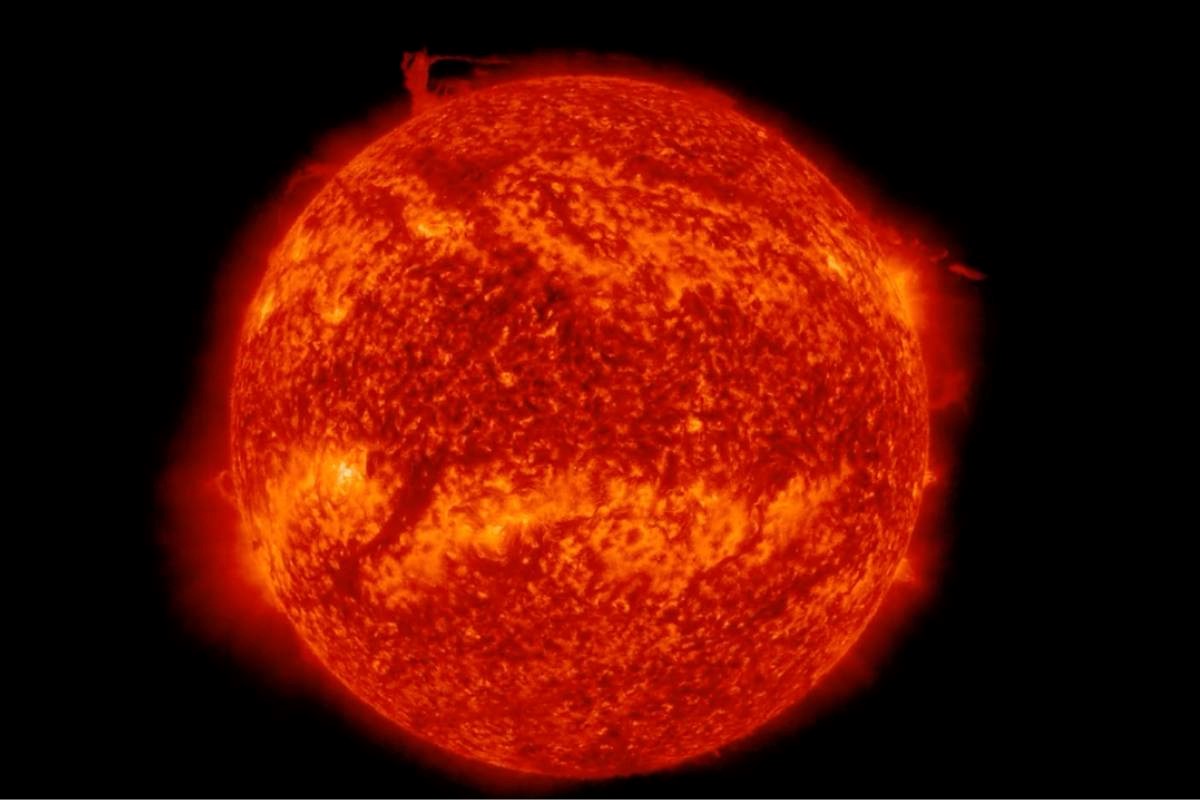While there’s no need to panic, it’s a bit perplexing to learn that something weird is going on with the sun. Scientists have revealed that a section of the sun’s northern pole in the form of a giant plasma filament has broken off.
After separating from the sun, it began circling around the star’s top as though it were a “massive polar vortex.” Scientists say this has never happened before, and they have no idea what has triggered this occurrence.
To make this clearer, this is not the first time astronomers have noticed filaments disintegrating from the sun. For example, in 2015, two long solar material threads fell off from the sun and burst into outer space. The lower filament broke only about an hour or two after the upper one erupted.
However, despite multiple similar occurrences, the broken parts have never circled the sun in the whirlwind-fashion as they have recently observed.
Tamitha Skov, a space weather physicist who is popular for sharing regular updates in her field, broke the news on X (formerly Twitter) on February 2.
She wrote in an excited tone, “Talk about Polar Vortex! Material from a northern prominence just broke away from the main filament & is now circulating in a massive polar vortex around the north pole of our Star. Implications for understanding the Sun’s atmospheric dynamics above 55° here cannot be overstated!” She also shared a video of the event as captured by NASA’s Solar Dynamics Observatory.
Solar prominences are primarily made up of hydrogen and helium. When they burst from the sun’s surface, they release plasma in the form of electrified gas. Even though no one can tell the reason behind this phenomenon, scientists have speculated that it may have something to do with the flipping of the sun’s global dipole magnetic field, which happens every 11 years.
Scott McIntosh, a reputable solar physicist and deputy director at Colorado’s National Center for Atmospheric Research, revealed that “Once every solar cycle, it forms at the 55 degree latitude and it starts to march up to the solar poles.”
Speaking with Space.com, he further stated that, “It’s very curious. There is a big ‘why’ question around it. Why does it only move toward the pole one time and then disappears and then comes back, magically, three or four years later in exactly the same region?”
Sadly, not only do we not know the exact reason why “hedgerow in the solar plasma” has led to a polar whirlwind, but there’s little hope that we’ll find out anytime soon. This is because, according to McIntosh, scientists cannot observe the region directly as they’re limited to the ecliptic plane (the imaginary and geometric circle that contains the Earth’s orbit).
The European Space Agency’s Solar Orbiter Mission is expected to provide some insight into the recent happenings as it photographs the sun from inside Mercury’s orbit. However, McIntosh believes that this will not provide the in-depth explanation that we need to fully understand what’s going on with the sun. He suggests that we need a completely new mission dedicated to this cause to achieve the best results.



















